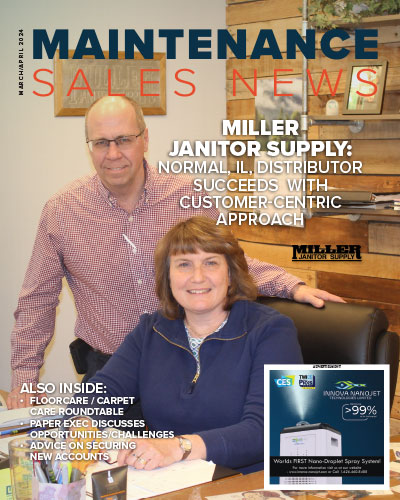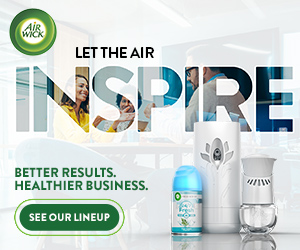Steps To A Successful New Product Introduction
By Michelle Gross, Vice President of Marketing for Sellars
When a company launches a new product, there’s typically a lot of excitement internally and team members are sure the product will be a hit externally. However, market adoption isn’t always guaranteed and sometimes companies stumble. While there’s no foolproof plan, there are specific steps businesses should take to ensure a greater likelihood of success.
Assemble The Team
New product development (NPD) shouldn’t be done in a silo. A cross-functional group that includes product management, marketing, sales, engineering, manufacturing, and supply chain should be assembled since each has valuable expertise and insight to contribute to the effort.
NPD is time intensive but the level of activity ebbs and flows during the process, so team members won’t be continually taxed.
Formalize New Product Development
Sometimes new product ideas come from a single individual, like a sales rep or marketing professional, or as a result of customer research or in-field visits. Other times, they’re born in response to a competitor or a shift in the market. No matter the source, formalizing NPD is imperative so that someone’s “passion project” doesn’t get pushed through without being properly vetted.
To avoid that scenario, companies should adopt an objective and disciplined process that includes predefined milestones where critical reviews are conducted.
One such method is the Stage-Gate Process. While there are some variations depending on the company, most Stage-Gate processes include defined phases: Idea Generation; Business Case; Concept Validation & Testing; Product Development/Go-to-Market Strategy; Product Launch; and Post-Launch Review.
The critical component is that, after every stage, there’s a gate review with the leadership team to determine if the concept is approved for the next phase. At each stage, product viability, financials and forecasts are assessed and updated with the most current information. Based on an examination of the information, the team then decides to move forward or discontinue the effort.
Giving team members permission to say, “No,” is a critical part of the equation. The reasons behind a “no” can surface important discussion points that may lead to significant product improvements.
Idea Generation
The initial discovery phase should include research with customers who are using the product and distributors who are selling it.
Qualitative research, which includes focus groups, one-on-one interviews and in-field observational study, is typically implemented at the beginning of NPD to gather insight on customer needs, usage habits and behaviors, beliefs, attitudes and preferences. Customer pain points or problems are usually identified at this time.
An analysis of the qualitative research findings should yield a handful of NPD ideas that the team feels are viable enough to go through the Stage-Gate Process. In this phase, you would conduct a SWOT analysis to understand where the opportunities exist.
At the end of the day, keep in mind that not every new product from the discovery phase is going to make it to market.
Create An Initial Business Case
The Scoping phase includes a deep dive into the market and poses a number of questions:
- What are the advantages for customers?
- Is there a unique value proposition or technology?
- What’s the potential demand?
- What does the competitive landscape look like?
- What is a potential forecast in units and dollars?
- What is the preliminary margin?
- What is the development timeline?
- Who is our target market?
Concept Validation And Testing
If a new product advances to this stage, product concepts are developed further, more work is done to analyze the market and technical feasibility, and additional testing is conducted to confirm product viability and target markets. In addition, forecasts, pricing and product features and benefits continue to be refined. In this stage, additional market research may be conducted as well.
If budgets don’t allow for primary research, the team can turn to secondary sources of information, including industry reports, academic studies, and government statistics. Nontraditional “in-market” sources can yield a wealth of insight. Monitor social media for trends and “talked about” issues, dive into product reviews, and explore high-ranking Internet search terms.
Product Development/Go-To-Market Strategy
In this stage, the product goes from being simply a concept to an actual element. This is where engineering, supply chain and manufacturing do a significant amount of heavy lifting. A product prototype is created, and plans are put in place for testing. An initial sales and marketing plan is developed to support the product launch, product packaging is created, and plans for a market roll out are identified with various customer segments.
Launch
Sales and marketing come together to finalize their plans and launch the product. Oftentimes, in the midst of a flurry of activities, training is overlooked and that can lead to a multitude of launch issues. The customer service team, sales force and external reps all require training, product education, and support materials to accomplish sell in. Once that’s complete, marketing kicks in to widely promote the product. If all goes well, orders begin to flow and product starts to ship.
Post-Launch Evaluation
Last, but not least, there’s the post-launch evaluation. Each new product introduction can yield valuable learnings for the future. Don’t be afraid to explore what worked, what didn’t, and why.
While NPD can require a significant investment of time and money, new products have the potential to generate additional revenue and open up new markets for companies. Plus, if a business isn’t continually evaluating and identifying opportunities for new products, that opens the door for competitors to expand their marketshare and burnish their reputation as an industry leader and innovator. Of course, there’s never absolute certainty with new product introductions but there are systems and procedures, like the Stage-Gate Process, that can be put in place to stack the deck in your favor.
Founded in 1985 and headquartered in Milwaukee, Wisconsin, Sellars is a leading manufacturer of shop towels, multi-use disposable wipers, towel and tissue and absorbent products. Sellars’ products, which are sold under the ToolBox®, Clean Task® and Mayfair® brands, are made from recycled and renewable materials, are high performance and good for the environment. Sellars is committed to using sustainable practices in all business areas while serving our people, customers, and the planet. Learn more about Sellars’ nearly 40 years of innovation by visiting sellars.com.





